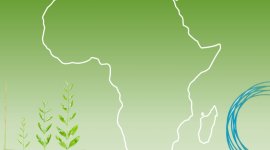Financing development: navigating the landscape of financial instruments and mechanisms

Photo © Adobe Stock/Joshua Resnick
Online
Financing development: navigating the landscape of financial instruments and mechanisms
9 Giugno–11 Luglio 2025
Il corso è disponibile in English
Achieving ambitious 2030 Agenda requires scaling up domestic and global resources. It also demands a shift from funding the SDGs to a wider financing approach through a blend of public, private, domestic and international resources.
SDGs are being increasingly integrated into public budgets and development cooperation, and financial markets and investors have positively reacted to a stronger integration of the SDGs in public and private investment decisions.
However the gaps in financing SDGs remain large. Financing has not yet been adequately reaching the geographies and people that need them the most.
Key features
Learn online
A series of self-paced elearning modules combined with interactive live webinars.
Resources
Tap in the knowledge of the speakers from the UN agencies, financial sectors and public actors.
Activities
Learn from the experiences, case-studies and examples.
Assignments
Draft a 2-4 page concept note for a chosen blended finance mechanism.
Presentazione del corso
A number of financial instruments and mechanisms have emerged to create scalable and effective ways and leverage diverse sources of finance to channel them towards achieving the SDGs. The recent prominence of the financing development agenda leads to an increasing need to keep up with the opportunities and risks emerging in this arena. The aim of this course is to build the capacities of various actors in understanding the changing context of financing development as well as issues of design and applicability of various financing mechanisms in support of the SDGs. The course also brings together some of the key learnings and practices for designing and implementing financing mechanisms for development.
Chi si iscrive a questo corso?
Government agencies - Staff of UN agencies - Financing organizations - Private sector actors interested in development and sustainability - Non-profit entities - Wider development community
What will you learn?
By the end of the course, participants will have:
- Navigated the landscape of financing development and discussed the role and functions of various actors engaged
- Recognized the rationale behind use of blended finance for development objectives
- Become introduced to a set of financing mechanisms used for development
- Applied the course content to design a financing mechanism in their own contexts
Course framework and modality
The e-learning course will be implemented over a period of 5 weeks and is structured around 4 content modules with activities and assignments.
An equivalent of 1 day of learning is foreseen in each calendar week as a combination of self-paced learning and webinars. Self-learning modules can be taken flexibly, while the webinar will be scheduled as interactive live sessions.
- Equivalent of 24 hours of learning
- Combination of 8 webinars and 9 self-learning lessons
- Webinars in Zoom: combination of facilitator’s input, speakers presentations, discussions with the group and some review of the materials from self-learning modules
- Self-learning lessons in Articulate Rise: materials, mini-cases, activities, examples, polls and quizzes.
- Course assignment: participants develop a 2 to 4 pages concept note for a chosen financing development theme in their country.
- Delivery throughout 5 weeks
Course content
The course is designed around 4 thematic modules and the final assignment.
- Module 1: Current development and need for financing. This module covers ongoing discussions in the area of financing development. Key concepts and definitions, sources of financing, the role of public and private sectors will be discussed along with various initiatives and dialogues taking place at the global level.
- Module 2: SDG Financing enabling environment. In this modules the SDG finance policy processes and tools will be introduced and discussed.
- Module 3: Financing mechanisms. The module covers the basis and scope of blended finance instruments and mechanisms, accompanied with a deeper look at several selected mechanisms addressing various SDGs.
- Module 4: Designing a financing mechanism. This final module will cover the process of designing the mechanisms, along with lessons learned regarding development of proposals with an inclusion of a blended finance instrument.
Certificate
Upon completion of the course, participants will be granted a certificate of participation.


